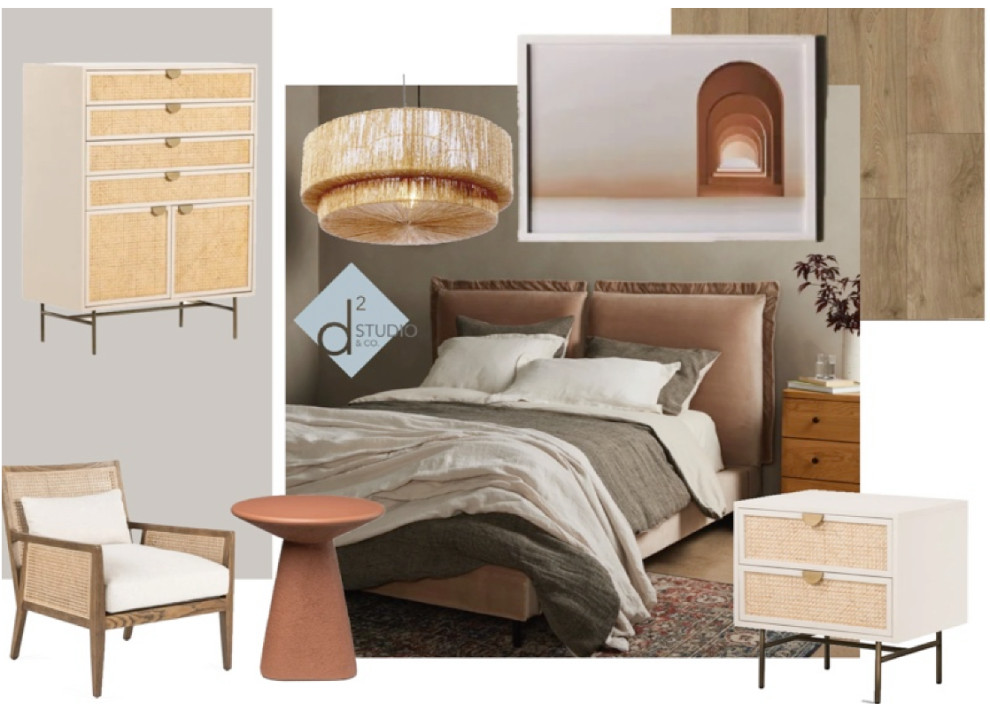Designing With Moodboards!

Interior design is not just about selecting furniture and color palettes; it's a powerful means of self-expression and storytelling. Mood boards, a visual tool used by designers, play a pivotal role in this creative process. In this blog post, we will explore the fascinating world of interior design and how mood boards serve as a compass, guiding designers and homeowners alike in their quest to create spaces that reflect mood, personality, and style.
The Power of Mood Boards
Visualization: Interior design begins with a vision. Mood boards allow you to collect and organize ideas, inspirations, and design elements in one place. They provide a tangible representation of your design concept, making it easier to visualize the final result. Mood boards help establish the emotional tone of a space. By carefully curating images, colors, and textures, you can convey the desired mood, whether it's cozy and intimate, bright and energizing, or serene and peaceful.

Material and Color Coordination: One of the critical aspects of interior design is selecting the right materials and colors. Mood boards enable you to experiment with various combinations, ensuring that every element harmonizes with the overall theme. For design professionals and homeowners working with a team of experts, mood boards serve as a common reference point. They facilitate communication and ensure everyone is on the same page, preventing misunderstandings and design conflicts.
Creating a Mood Board
1. Collect Inspirations: Begin by gathering inspirations from various sources. This could include magazine clippings, online images, fabric swatches, and even personal photographs. Let your imagination run wild.
2. Define Your Concept: Clearly define the concept or theme you want to convey in your design. Are you going for Scandinavian minimalism, a vintage-inspired look, or an urban industrial feel? Your concept will guide your choices.
3. Select Colors and Textures: Choose a color palette that resonates with your concept. Include various shades and textures to add depth and interest to your mood board. Don't forget to consider how different colors make you feel.
4. Arrange and Experiment: Start arranging your collected items on a board or digitally using tools like Canva or Pinterest. As a HOUZZ professional we utilize our HOUZZ back end tools to create our Mood Boards. Experiment with different layouts until you find a composition that captures the essence of your design.
5. Refine and Edit: Review your mood board critically. Does it convey the desired mood and style? Is there coherence in your choices? Edit and refine until you achieve the perfect representation of your vision.

The Impact of Mood Boards in Interior Design
Mood boards are not limited to professionals; they are a valuable tool for homeowners looking to redesign their living spaces. They empower individuals to take control of their home's aesthetics and ambiance. By investing time in creating a mood board, you can:
- Save time and money by avoiding costly design mistakes.
- Gain confidence in your design decisions.
- Collaborate effectively with designers or contractors.
- Keep the design process organized and focused.

Interior design is a journey of self-expression, where every element has the potential to tell a story and evoke emotions. Mood boards are your creative compass in this journey, guiding you toward a space that reflects your unique personality and aspirations. Whether you're embarking on a full-scale renovation or simply refreshing a room, take the time to explore, experiment, and craft a mood board that captures the essence of your dream interior. Let your creativity flourish, and watch as your vision comes to life within the walls of your home.
